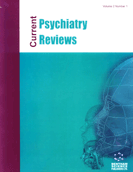Abstract
Schizophrenia is characterised by disturbances in language and thought. Semantic priming paradigms have been frequently employed to investigate language function in schizophrenia. The semantic priming effect is the reaction time advantage that is achieved by priming a target to which a participant is responding with a semantically or associatively related word. In schizophrenia, this area of research has produced contradictory results. The current review considers the significance of the specific task parameters employed and the characteristics of the patient sample as possible reasons underlying discrepancies, as well as reviewing the significance of neuroimaging studies. We establish the relatedness proportion effect, where low proportions of related prime-target pairs result in reduced or normal SP in people with schizophrenia, whilst higher proportions lead to increased SP. Additionally, that using indirectly related prime-target pairs results in increased SP in schizophrenia. Further, in terms of patient characteristics, patients with thought disorder produce the most consistently abnormal SP results. We will provide a comprehensive up-to-date review of research on semantic priming effect in schizophrenia, as well as consider the implications of the results.
Keywords: Schizophrenia, semantic priming, semantic memory, ERPs
 3
3

